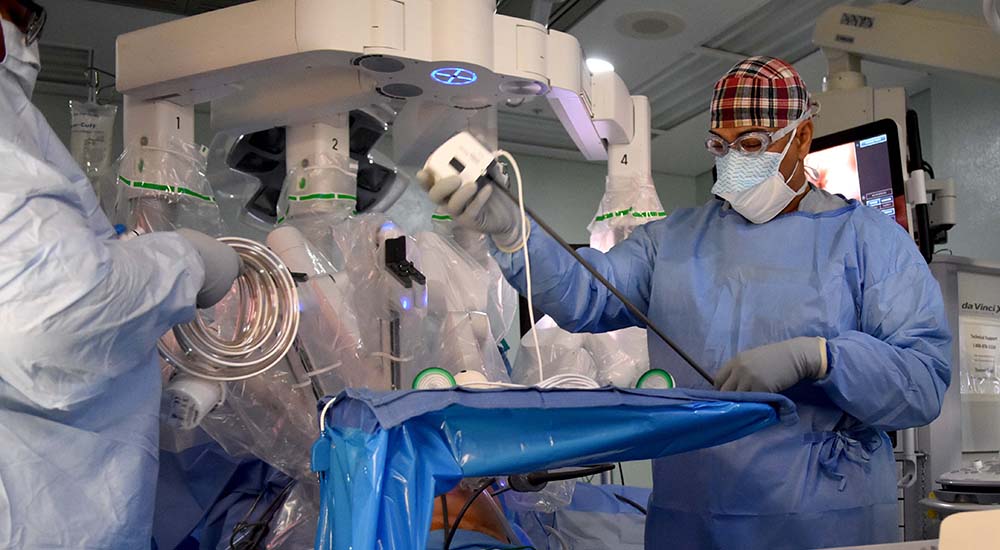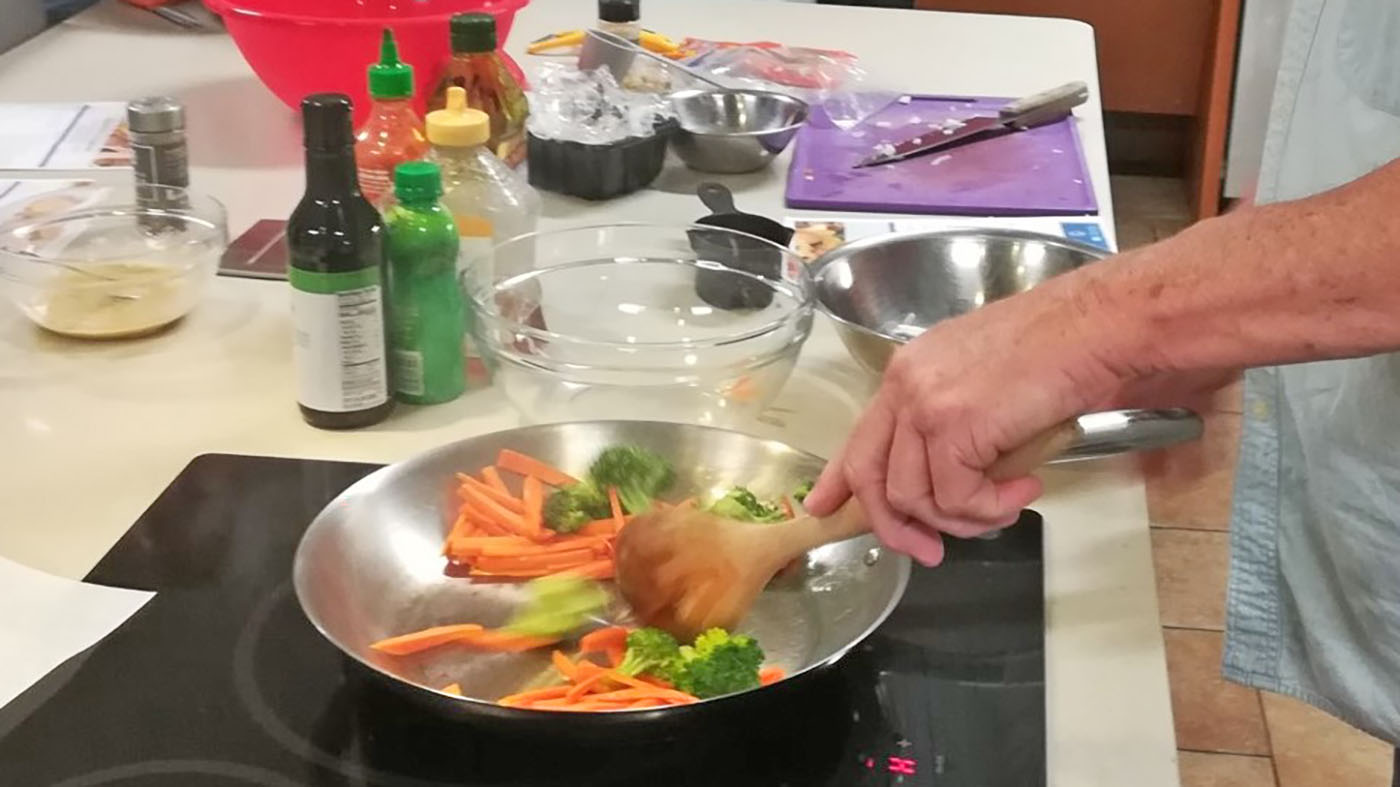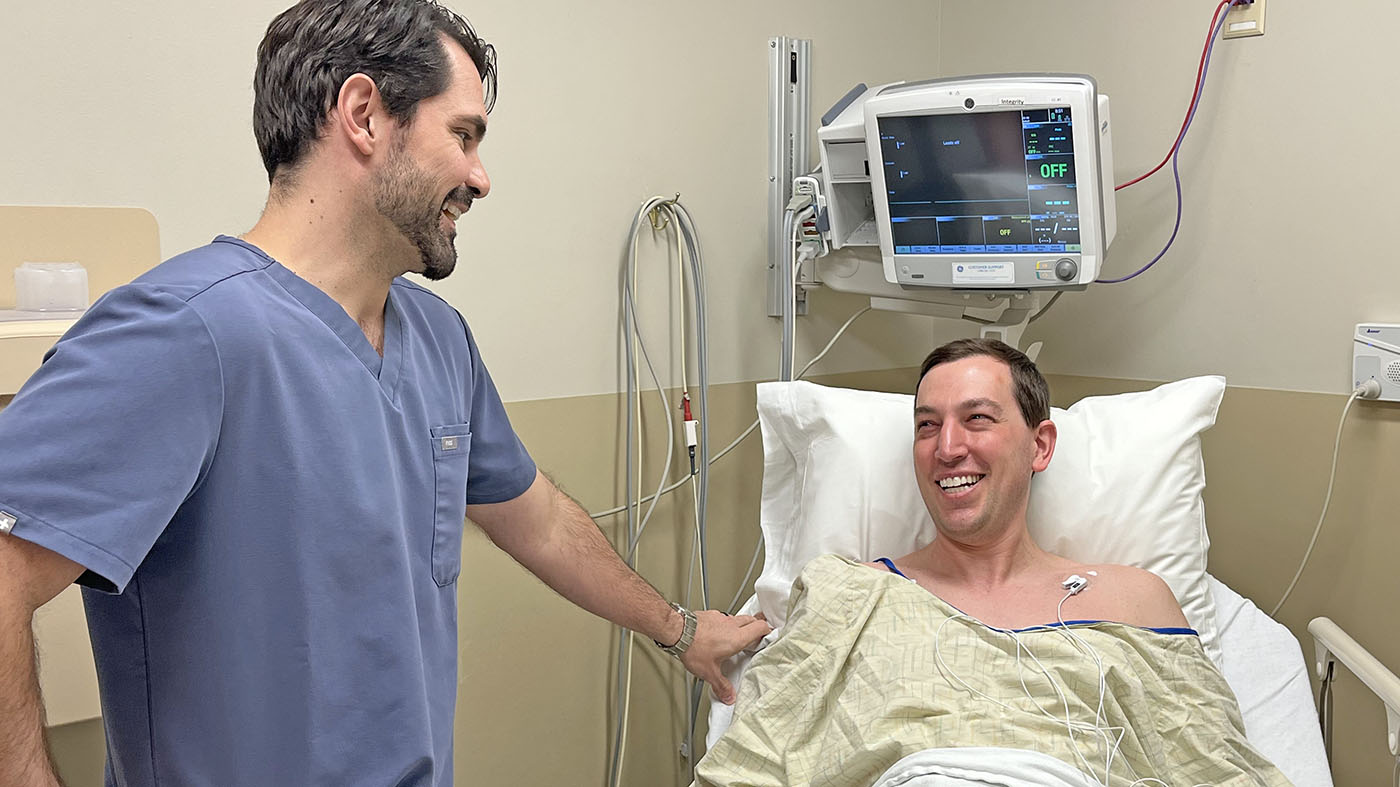Surgeons at VA North Texas Health Care System have a few extra hands in the operating room.
These hands are part of the da Vinci surgical system and they have assisted with more than 2,000 Veteran surgeries at Dallas VA Medical Center. VA North Texas has two da Vinci robots. Three surgical sections use the robots on a daily basis: general surgery, urology and cardiothoracic surgery.
In the photo above, Rashann Coleman adjusts the instruments and camera on the da Vinci patient cart during a robot assist liver resection surgery. Coleman is an RN with Robotic First Assist and an Air Force Veteran.
“For general surgery, we use the robot for a wide variety of procedures,” said Dr. Thai Pham, section chief of General Surgery. “They range from less complex cases, such as hernia repairs and cholecystectomies, to very complex cases, like bariatric, colorectal, hepatobiliary, pancreas and foregut surgeries.”
Using the robot to perform these surgeries offers many benefits to both the patient and surgeon.
Less post-operative pain
“For the patient, the robot allows for easier application of minimally invasive surgery and greater access for patients to minimally invasive surgeries,” said Pham. “Minimally invasive surgery has the advantage of less post-operative pain, shorter hospital stays, faster recovery to normal activities and decreased complication rates.”

Dr. Martin Augustine sits at the surgeon console and controls the da Vinci robot during a robot assist liver resection surgery.
The robot allows for better ergonomics for the surgeon would otherwise have to stand for hours while in surgery. It helps with difficult angles and can help reduce repetitive stress injuries.
“The robot really excels in small spaces in the human body and many of the spaces we need to get to are in tiny areas,” said Coleman. “One example is the prostate. It’s a small organ and is difficult to get to with our hands because our hands are so big. The robot’s hands are a lot smaller and they can fit into those tiny spaces.”
Compared to standard laparoscopic instruments, the da Vinci surgical system recreates a wristed motion and gives a significant increase in dexterity. That makes it possible to perform more complex surgeries, explains Dr. Jeffrey Gahan, Urology Surgeon.
“We have done more robotic cases than any VA in the country and we are the busiest by surgical volume in terms of urologic cases,” said Gahan.
Surgeons must complete credentialing plan
The surgeons who use the robot must complete a formalized credentialing plan. The plan includes simulation training, hands-on cadaver lab training and case proctoring. Additionally, the surgeon must perform a number of cases over a two-year period to maintain their credentials.
“We are the first VA to reach 2,000 robot cases. We work really hard to give our Veterans the best possible care that’s available,” said Coleman. “I want to give my brother and sisters the care they deserve.”
Jennifer Roy is a public affairs specialist with VA North Texas Health Care System.
Topics in this story
More Stories
VA promotes early nutrition intervention for chronic kidney disease with targeted programs like Heathier Kidneys Through Your Kitchen.
VA Research Advisory Committee on Gulf War Veterans’ Illnesses hosting Veteran Engagement Sessions in Phoenix for 1990-91 Gulf War Veterans.
Navy Veteran and president of the American Medical Association got a colonoscopy and encourages other Veterans to do the same.






